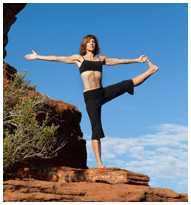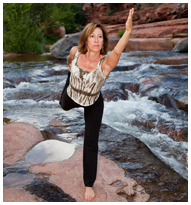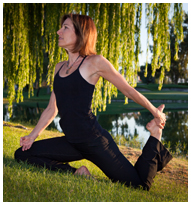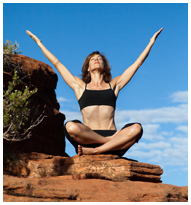You may be confused by the names of yoga classes, such as Hatha, Bikram, or Ashtanga, or by marketing names such as Hot Yoga or Power Yoga. The descriptions below may help you better understand some of the popular types of yoga available.
Hatha Yoga
Hatha yoga is the most popular form of yoga and what most people think of as yoga. It consists of physical postures and breathing to relax the body and calm the mind. Hatha is often used as a generic term, as many other styles of yoga are based upon Hatha, including Bikram, Ashtanga, and Kundalini yoga.
-
Bikram yoga
Bikram yoga (also called hot yoga) is performed in a room that is 105 degrees or hotter. The Bikram style is composed of a series of 26 postures and two breathing techniques that are performed in order. Each yoga move is often done twice and held for a specified period of time. -
Ashtanga yoga
Iyengar Yoga
Ashtanga yoga (also called power yoga) is a discipline that synchronizes your breath with a series of postures. Flowing from one posture to the next places great significance on strength and stamina while building muscle and increasing flexibility.
Iyengar yoga is a classical style that focuses on the correct way to align your body while moving from one yoga posture to another. This type of yoga pays close attention to basic theory.
Kundalini Yoga
Kundalini yoga uses chanting (mantras), meditations and visualizations to stimulate the mind, body and spirit.
Vinyasa Yoga
Vinyasa yoga (sometimes called flow yoga) represents the union between movement and breath. It requires you to move in and out of each posture with a specific breathing pattern. -
Deb will discuss with you any physical limitations you currently have, such as injuries or ailments, and will design a program for you that includes useful modifications during the progression of your practice. Deb is experienced in Hatha, Ashtanga, and Vinyasa yoga and will tailor instruction and pose sequences to your goals and ability.
Yoga Poses
The physical poses of yoga are called asanas. They are grouped by physical positioning and each grouping works on the body and mind in a distinct way. The Sanskrit name is shown for each example pose for reference only. You do not need to know the Sanskrit names to do yoga.
Standing Poses are the foundation of many poses and are beneficial for improving posture, strengthening legs, and building strength and mobility in the hips, knees, neck, and shoulders. Example: Mountain Pose (Tadasana).
Sitting Poses align the spine and focus the mind. They are calming poses that regulate blood pressure and promote restful sleep. Example: Seated Forward Bend (Pashchimottanasana).
Reclining (Supine) Poses are relaxing and less strenuous, relieving tension and fatigue. Example: Reclining Big Toe Pose (Supta Padangusthasana).
Backbending Poses energize and open the body, particularly the upper spine and chest. Backbends are great for the digestive and nervous systems and strengthen arms and shoulders. Example: Bridge Pose (Setu Bandhasana)
Inversion Poses bring fresh blood to the heart and head, improve circulation, and tone internal organs. Example: Downward Facing Dog (Adho Mukha Svanasana).
Twisting Poses energize and cleanse the body, massage internal organs, and increase spinal flexibility. They relieve stiffness in the neck and shoulders. Example: Spinal Twist (Ardha Matsyendrasana)
Balancing Poses develop muscle tone and coordination and develop lightness, strength, and agility. Example: Tree Pose (Vrksasana).
Relaxation Poses are healing and rejuvenating to the body and mind. Example: Corpse Pose (Savasana).




